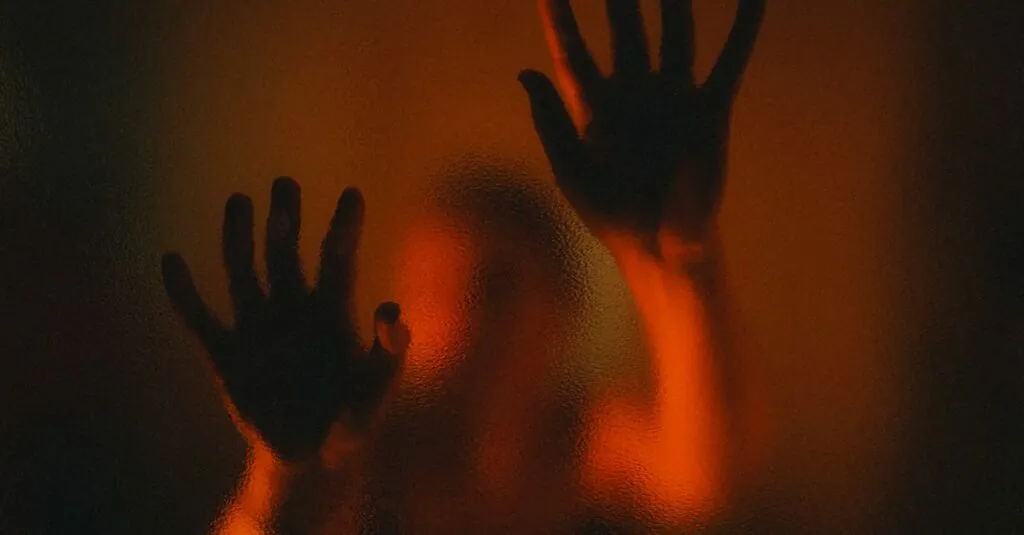Table of Contents
ToggleIn a world where the lines between reality and fiction blur, the trap movie genre rises like a phoenix from the ashes of conventional filmmaking. These films take audiences on wild rides filled with unexpected twists, outrageous characters, and enough suspense to keep viewers glued to their seats. If you think you know what to expect, think again—trap movies are here to flip the script and redefine entertainment.
What Is a Trap Movie?
Trap movies create an immersive experience, merging reality and fiction. These films captivate audiences through unexpected twists and outrageous characters.
Definition and Origin
A trap movie refers to a specific genre that examines narrated stories with a sense of entrapment. Originating in the early 2000s, filmmakers sought to challenge conventions and blur narrative boundaries. The term captures themes of confinement within plots, drawing viewers into gripping situations. In these films, characters find themselves stuck in circumstances beyond their control, creating tension. Influences from psychological thrillers and social commentaries shape the genre’s unique approach.
Key Characteristics
Several prominent traits define trap movies. First, they often include unpredictable plot twists that constantly engage the audience. Strong characters, sometimes with morally ambiguous traits, enhance the narrative and evoke strong emotional responses. Moreover, atmospheric settings contribute to an intense viewing experience. Audience engagement typically rises as the unfolding storytelling creates a feeling of suspense. Creators blend elements of drama and horror, continuously keeping viewers on edge.
Notable Trap Movies
Trap movies captivate audiences with their thrilling narratives and unexpected twists. Here are some notable films that exemplify this genre.
Classic Trap Films
“Misery” stands out as a classic trap film, showcasing themes of entrapment through the chilling story of an author held captive by an obsessive fan. “The Shining,” a staple in horror, immerses viewers in an eerie hotel where isolation leads to madness. “Saw” introduces elements of psychological horror, forcing characters into deadly games that challenge their will to survive. Each of these films combines suspense and moral ambiguity, defining early trap narratives that continue to influence modern cinema.
Recent Releases
“The Invisible Man” redefines the genre with its focus on psychological terror and entrapment in an abusive relationship. “Ready or Not” delivers a darkly comedic twist on the trap movie formula, incorporating social commentary into its intense survival story. “Escape Room” captures the essence of entrapment through a group of strangers who become pawns in a deadly game. These recent films demonstrate how the genre evolves while still thrilling audiences with gripping scenarios that explore fear and survival.
Themes and Messages
Trap movies address significant social issues while keeping audiences engaged through thrilling narratives. These films reflect societal fears, personal conflicts, and often critique cultural norms.
Social Commentary
Trap movies frequently serve as platforms for social commentary. They tackle issues like mental health, addiction, and societal isolation. For instance, “Misery” showcases the devastating effects of obsession, highlighting the darker sides of fame and creative pressures. Characters represent broader societal struggles, allowing viewers to connect their own experiences to the story. Filmmakers use gripping scenarios to spark discussions, encouraging critical examination of contemporary topics.
Subversion of Expectations
Subversion of expectations plays a crucial role in trap movies. These films often defy traditional storytelling arcs, leading audiences down unpredictable paths. Shocking plot twists, such as those found in “Saw,” challenge viewers’ assumptions, creating a unique cinematic experience. Characters frequently exhibit morally ambiguous traits, making it difficult for audiences to predict their decisions. The result is an engaging journey that keeps viewers on edge, eager to discover what happens next.
The Impact of Trap Movies
Trap movies significantly influence the film industry by redefining suspense and storytelling boundaries. They challenge filmmakers to create narratives that capture attention through tension and unpredictability.
Influence on Cinema
Trap movies inspire new storytelling techniques and innovative plot structures. Many filmmakers now incorporate elements from this genre to engage audiences in unique ways. Notable directors, such as Jordan Peele and M. Night Shyamalan, draw from trap movie conventions, emphasizing psychological tension and unforeseen twists. Citing films like “Get Out” and “Old,” they exemplify the genre’s growing presence in modern cinema. This evolution encourages filmmakers to explore darker themes and complex characters, enriching the overall viewing experience.
Cultural Relevance
Trap movies resonate with contemporary audiences, reflecting social fears and anxieties. They engage with relevant issues like mental health, addiction, and societal isolation, prompting discussions on these critical topics. For instance, “The Invisible Man” addresses themes of domestic abuse, while “Saw” explores moral dilemmas amid survival situations. Additionally, trap movies invite viewers to confront their own vulnerabilities, creating a deeper connection to the narratives. This cultural commentary enhances their impact, allowing these films to remain significant in today’s entertainment landscape.
Trap movies have carved out a unique niche in the film industry by merging suspense with social commentary. Their ability to engage viewers through unpredictable narratives and morally complex characters sets them apart from traditional genres. As filmmakers continue to explore darker themes and innovative storytelling techniques within this genre, trap movies will likely maintain their relevance in popular culture.
By reflecting contemporary anxieties and fears, these films not only entertain but also provoke thought and discussion. The evolution of trap movies signifies a shift in cinematic storytelling, encouraging audiences to confront uncomfortable truths while enjoying thrilling experiences.








